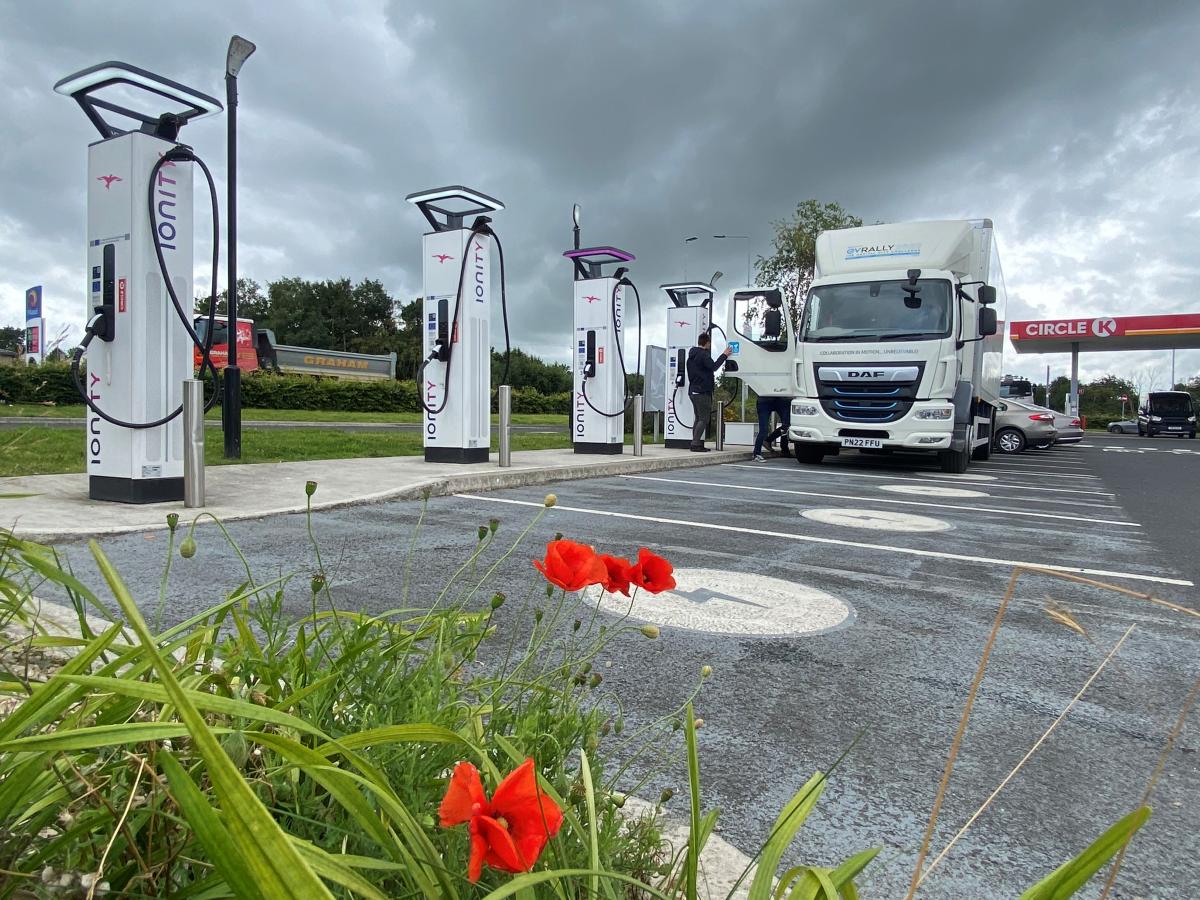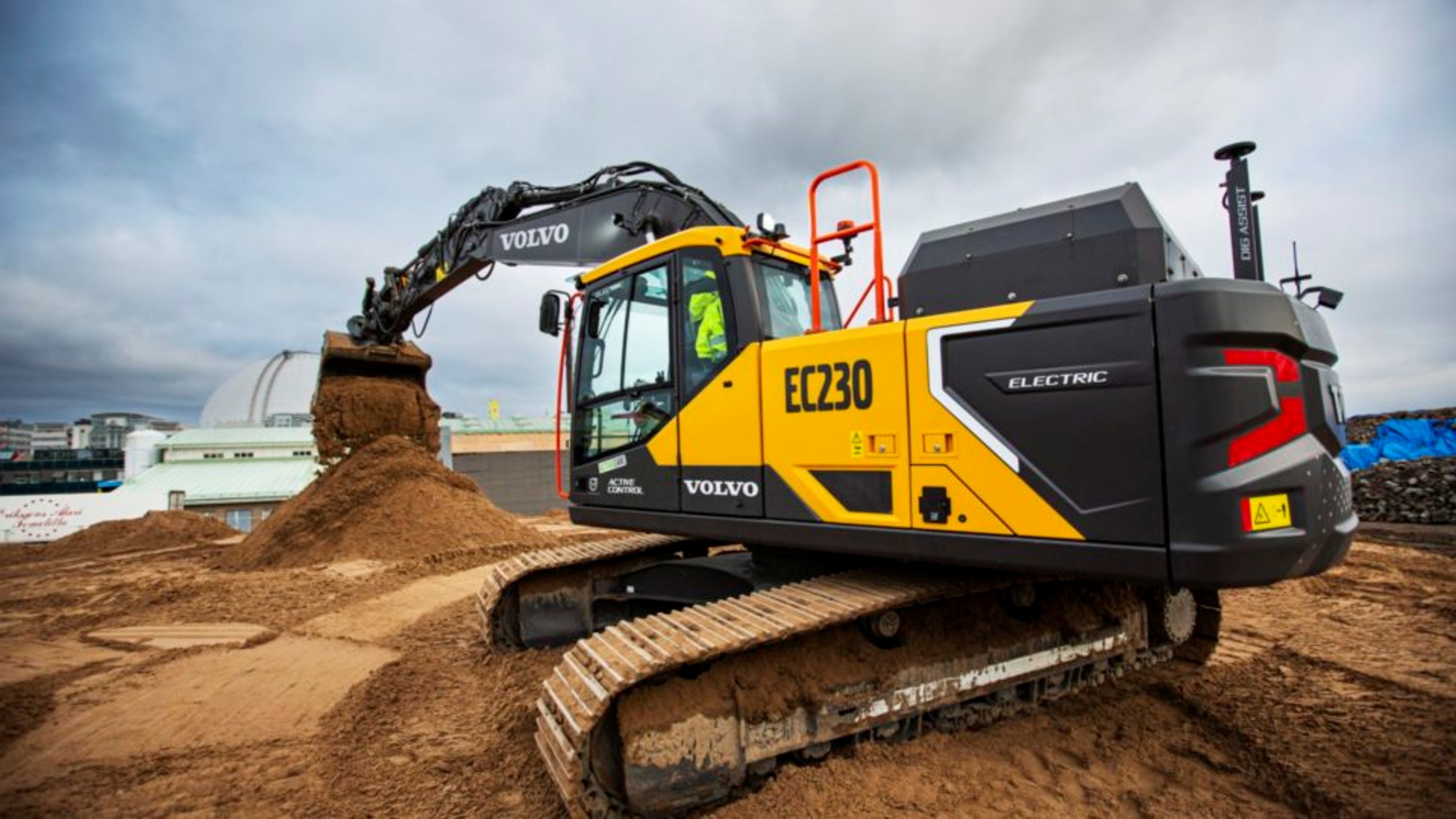TL;DR
Truck charging is complex: vehicles are larger, power demands are higher, and depots face space and cost challenges.
Public charging isn’t enough, which is why Paua Share’s shared depot network offers a critical bridge, turning idle chargers into revenue and giving fleets secure, low-cost access to larger sites.
This collaborative approach helps accelerate the electrification of trucks and commercial fleets today.
The Future of Electric Truck Charging: Why Shared Depots Hold the Key
Electrifying trucks is one of the most important challenges in the race to decarbonise transport. Cars and vans have already made headway with widespread public charging and home charging solutions. But for larger commercial vehicles, long wheelbase vans, rigid trucks, and articulated lorries, the challenge is an order of magnitude harder. Infrastructure, cost, and operational complexity all combine to make truck charging different.
In this article, we’ll explore everything you need to know about truck charging including where Paua supports your business with the charging of electric trucks:
- What truck charging is and how it works in practice
- Why truck charging is different from cars and vans
- What role shared depots play in enabling this transition
- How Paua is helping fleets and depots unlock value through a shared depot network
What is Truck Charging?
Truck charging refers to the supply of electricity to power medium and heavy-duty electric vehicles. Unlike passenger EVs, trucks are large, energy-intensive, and often operate on strict timetables. Charging a truck is not just about plugging in, it’s about integrating charging into a logistics system that has little tolerance for downtime.
Key aspects of truck charging include:
- High Power Demand: Trucks typically require larger battery packs (300–600 kWh or more). This means chargers often need to deliver power at 150kW, 350kW, or even higher to keep downtime manageable.
- Vehicle Size and Access Requirements: A charging solution must account for the physical size of HGVs, which can be 18 metres long, plus significant and relevant height constraints. This creates spatial challenges in depots and service areas.
- Operational Fit: Trucks work to timetables, delivering goods, making stops, and sometimes running almost 24/7. Charging needs to be woven into these patterns, not disrupt them.
- Infrastructure Cost: Grid upgrades, heavy cabling, and specialised chargers make truck charging infrastructure vastly more expensive than car charging points.
In short, truck charging is about scalingup both power and practicality.
Why is Truck Charging Different?
Truck charging diverges from car and van charging in several ways. Understanding these differences is critical if fleets and policymakers want to accelerate adoption.
1. Energy Intensity
A single truck can consume the equivalent electricity of 10–20 cars. That means a small fleet of trucks puts strain on local grid capacity in ways that a car fleet never would.
2. Depot-Centric Operations
Most trucks are depot-based. They return to the same location overnight or between shifts, making depots the natural hubfor charging. Public roadside charging, which works for cars, is far less suited to trucks because of their size and dwell time. However longer range journeys will require this service in the near future.
3. Space and Site Design
Truck depots need wide lanes, turning circles,and bays that allow for simultaneous parking and charging. Adapting existing depots to this new use case is complex and costly.
4. Economic Pressures
Fleet operators work on thin margins. The economics of charging, cost per kWh, downtime, utilisation of infrastructure, make or break the viability of electrification. Unlike consumers, they can’t afford long waits or inconsistent pricing.
5. Regulatory and ESG Drivers
Governments are tightening emissions regulations. Zero-emission zones, ESG reporting, and corporate net zero targets are pushing operators towards electrification. Yet without the infrastructureto match, adoption risks stalling.
In other words: truck charging is both a technological and operational challenge.
The Infrastructure Gap
Despite rapid growth in public EV charging, truck-specific charging is scarce. Most public chargers are designed for cars: they’re incar parks, motorway service areas, and forecourts where HGVs can’t easilymanoeuvre.
Even where high-power chargers exist, they arerarely designed with truck logistics in mind. The result? Fleets either over-invest in private depot infrastructure or delay electrification.
This is where the concept of shared depots becomes transformative.
The Role of Shared Depots
Shared depots are private or semi-private charging locations made available to other trusted fleets. Rather than each fleet building its own isolated infrastructure, depots open access, selectivelyand securely, to others.
A number of market leaders already provide this service through Paua Share.
How Shared Depots Work
- Depot Owners: List their chargers on a secure platform like Paua Share. They set rules on who can access, when, and at what cost.
- Visiting Fleets: Use the platform to access these chargers, often at lower cost and with greater reliability than public networks.
- Settlement: Usage, billing, and reporting are handled automatically, creating a seamless, auditable process.
Why Shared Depots Matter for Trucks
- Maximise Existing Investment: Infrastructure is expensive. Sharing spreads the cost and increases utilisation.
- Lower Fleet Costs: Visiting fleets gain access to cost-effective charging, often cheaper than public rapid networks.
- Larger Sites, Built for Trucks: Depots are already designed for large vehicles, wide bays, overnight parking, and secure access.
- Network Effects: The more depots share, the more valuable the network becomes for everyone. Each new host adds new coverage, each new visiting fleet adds new demand.
- Trust & Control: Unlike public charging, depot sharing is permission-based. Depot owners maintain control over who uses their chargers.
In effect, shared depots fill the gap between private infrastructure and public charging, giving trucks a viable path forward.
Case Study Evidence: Paua Share
Paua has pioneered depot sharing in the UKthrough Paua Share, supported by Suffolk County Council, OxfordshireCounty Council, Cenex, and Innovate UK.
- Local Authorities: Leveraged taxpayer-funded infrastructure to support multiple public sector fleets, improving utilisation and creating new revenue streams.
- Blue Light Services: Suffolk Fire & Rescue and Suffolk Police used depot sharing to collaborate securely, ensuring emergency vehicles had trusted charging access.
- Commercial Operators: Partners like Calibre D2D (truck and bus delivery) and First Bus have proven depot sharing works at scale for larger vehicles.
The results:
- Increased utilisation of underused chargers
- New income for depot owners
- Lower-cost charging for visiting fleets
- Greater collaboration between public and private operators
This is not just a concept, it’s aworking model, already proving its worth.
The Network Effect and Truck Charging
Truck charging, more than any other segment,benefits from network effects.
- More Depots Listed → More Value for Fleets: Greater coverage and reliability.
- More Fleets Using → More Revenue for Depots: Increased utilisation and ROI.
This virtuous cycle creates a self-reinforcingecosystem. With each new participant, the Paua Share network becomes morevaluable, defensible, and trusted.
Why Paua?
Paua is uniquely positioned to drive thistransformation.
- Proven Technology: A robust charge point management platform integrated with depot access and billing.
- Trusted Partners: Councils, emergency services, and large operators already onboard.
- Commercial Viability: Creates tangible revenue for depots and cost savings for fleets.
- Scalable Model: Works for vans, rigid trucks, articulated lorries, and buses.
- Alignment with Policy: Supports government goals for decarbonisation and efficient use of public investment.
Paua isn’t just another charging provider. Paua Share is building the UK’s shared depot network for trucks.
Looking Ahead: The Road to a Truck Charging Network
A full national truck charging network willtake year, grid upgrades, new sites, and planning approvals all take time. But fleets can’t wait.
Shared depots offer a bridge solution:
- Immediate access to existing infrastructure
- Lower upfront investment
- Faster progress towards net zero goals
As more depots join, and as trucks become more common, Paua Share will form the backbone of a commercial fleet charging ecosystem ,one that is collaborative, efficient, and scalable.
Conclusion; Paua enables the sharing of depots to support an electric truck future
Truck charging is different. It’s bigger, more complex, and more critical than car charging. But the challenges, high energydemand, depot constraints, economic pressures, can be overcome through smartcollaboration.
Shared depots, powered by Paua Share,turn idle assets into revenue and give fleets access to secure, affordable, andspacious charging. It’s not just about plugging in trucks, it’s about buildinga network that works for commercial fleets today and tomorrow.
Now is the time to unlock the power of depot sharing and build the UK’s truck charging future.






